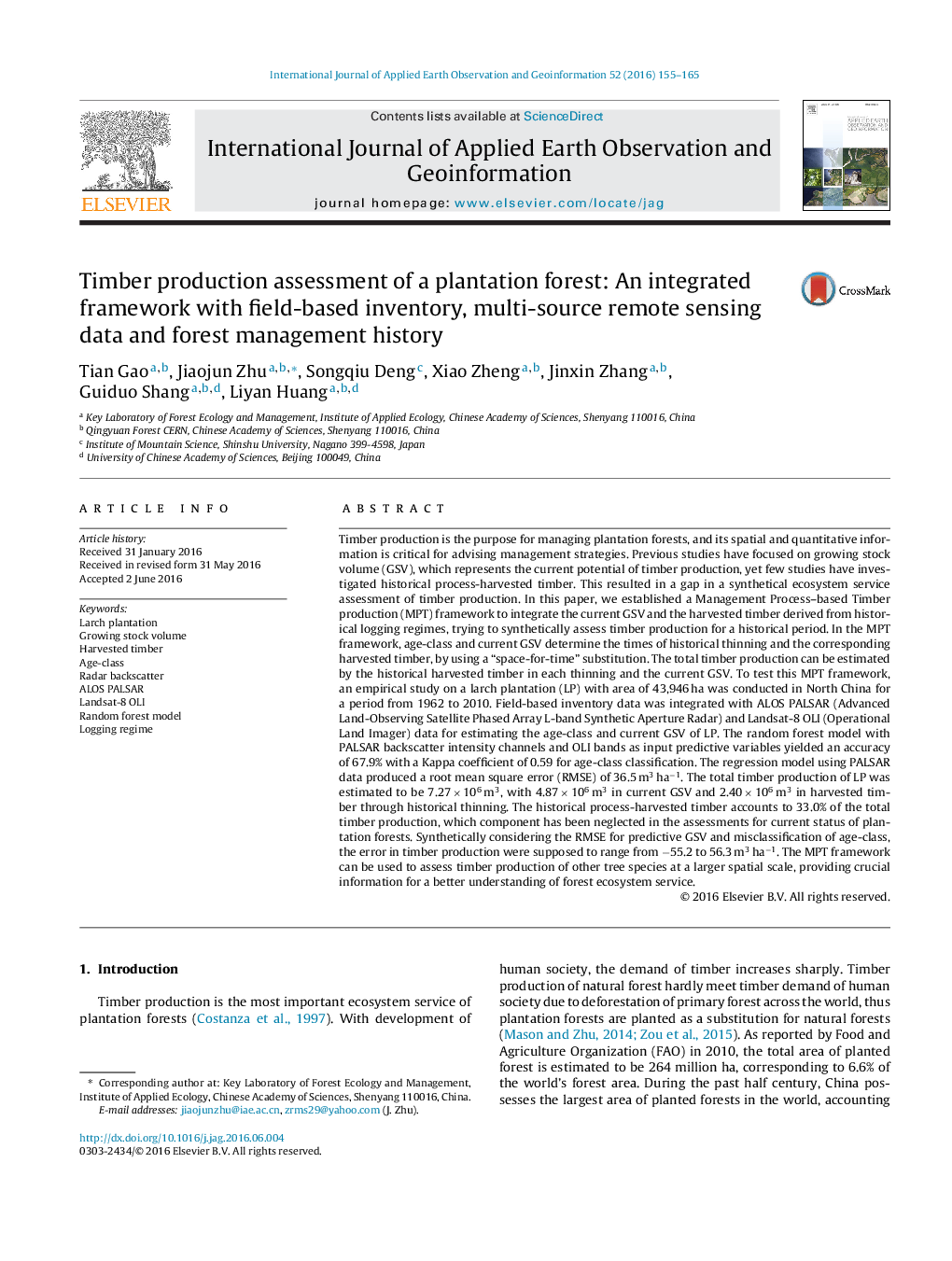| کد مقاله | کد نشریه | سال انتشار | مقاله انگلیسی | نسخه تمام متن |
|---|---|---|---|---|
| 6348478 | 1621805 | 2016 | 11 صفحه PDF | دانلود رایگان |
عنوان انگلیسی مقاله ISI
Timber production assessment of a plantation forest: An integrated framework with field-based inventory, multi-source remote sensing data and forest management history
ترجمه فارسی عنوان
ارزیابی جنگل های کاشت: یک چارچوب یکپارچه با موجودی مبتنی بر زمینه، داده های سنجش از راه دور چند منبع و تاریخ مدیریت جنگل
دانلود مقاله + سفارش ترجمه
دانلود مقاله ISI انگلیسی
رایگان برای ایرانیان
کلمات کلیدی
موضوعات مرتبط
مهندسی و علوم پایه
علوم زمین و سیارات
کامپیوتر در علوم زمین
چکیده انگلیسی
Timber production is the purpose for managing plantation forests, and its spatial and quantitative information is critical for advising management strategies. Previous studies have focused on growing stock volume (GSV), which represents the current potential of timber production, yet few studies have investigated historical process-harvested timber. This resulted in a gap in a synthetical ecosystem service assessment of timber production. In this paper, we established a Management Process-based Timber production (MPT) framework to integrate the current GSV and the harvested timber derived from historical logging regimes, trying to synthetically assess timber production for a historical period. In the MPT framework, age-class and current GSV determine the times of historical thinning and the corresponding harvested timber, by using a “space-for-time” substitution. The total timber production can be estimated by the historical harvested timber in each thinning and the current GSV. To test this MPT framework, an empirical study on a larch plantation (LP) with area of 43,946Â ha was conducted in North China for a period from 1962 to 2010. Field-based inventory data was integrated with ALOS PALSAR (Advanced Land-Observing Satellite Phased Array L-band Synthetic Aperture Radar) and Landsat-8 OLI (Operational Land Imager) data for estimating the age-class and current GSV of LP. The random forest model with PALSAR backscatter intensity channels and OLI bands as input predictive variables yielded an accuracy of 67.9% with a Kappa coefficient of 0.59 for age-class classification. The regression model using PALSAR data produced a root mean square error (RMSE) of 36.5Â m3Â haâ1. The total timber production of LP was estimated to be 7.27Â ÃÂ 106Â m3, with 4.87Â ÃÂ 106Â m3 in current GSV and 2.40Â ÃÂ 106Â m3 in harvested timber through historical thinning. The historical process-harvested timber accounts to 33.0% of the total timber production, which component has been neglected in the assessments for current status of plantation forests. Synthetically considering the RMSE for predictive GSV and misclassification of age-class, the error in timber production were supposed to range from â55.2 to 56.3Â m3Â haâ1. The MPT framework can be used to assess timber production of other tree species at a larger spatial scale, providing crucial information for a better understanding of forest ecosystem service.
ناشر
Database: Elsevier - ScienceDirect (ساینس دایرکت)
Journal: International Journal of Applied Earth Observation and Geoinformation - Volume 52, October 2016, Pages 155-165
Journal: International Journal of Applied Earth Observation and Geoinformation - Volume 52, October 2016, Pages 155-165
نویسندگان
Tian Gao, Jiaojun Zhu, Songqiu Deng, Xiao Zheng, Jinxin Zhang, Guiduo Shang, Liyan Huang,
